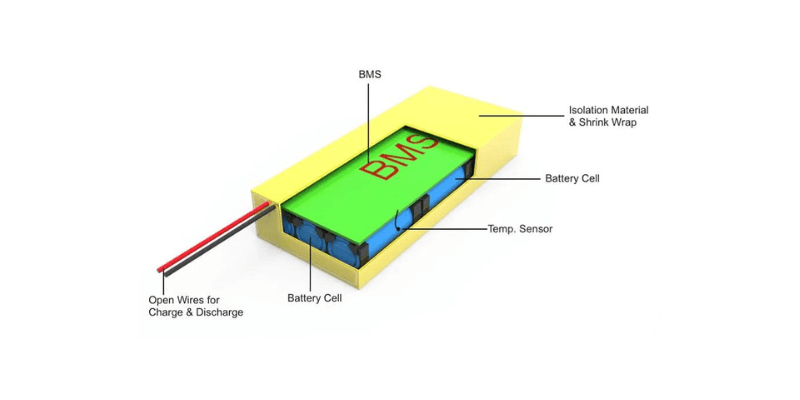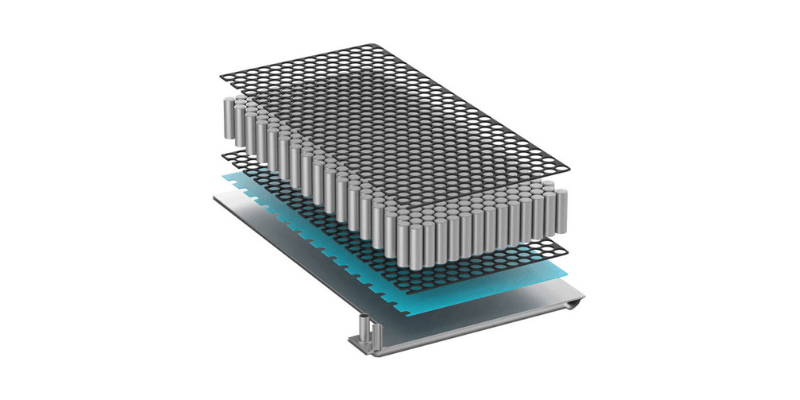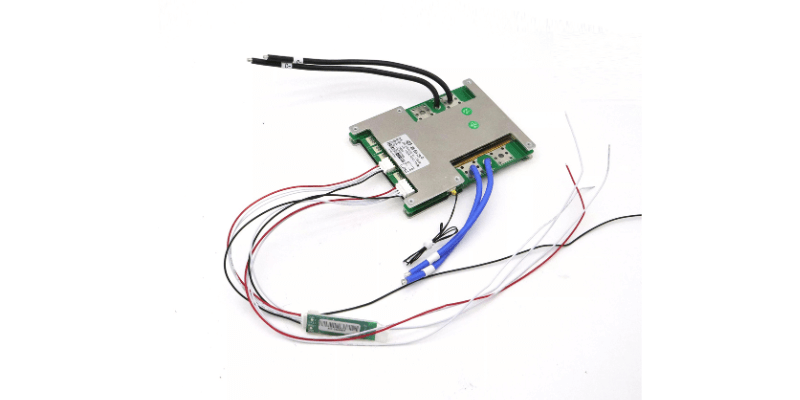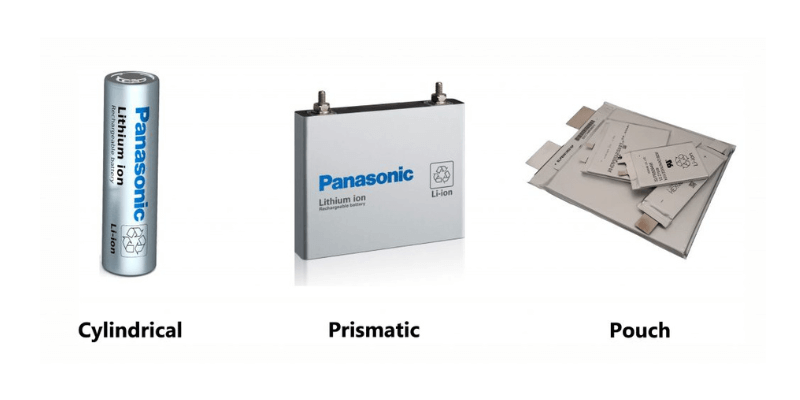Etter å ha fullført over 6000 Tilpasset litiumbatteripakkeprosjekterVi fant ut at klienter ofte har spesifikke spørsmål. I denne artikkelen vil vi fordype oss i de essensielle spørsmålene og svarene om Designe og produsere litium-ion-batteripakker.
Hva er de viktigste faktorene du må vurdere når du velger en tilpasset litium-ion-batteripakke?
Når du velger en tilpasset litium-ion-batteripakke, er det viktig å vurdere flere viktige faktorer.
For det første, energitetthet Spiller en viktig rolle, ettersom kunder ofte ser etter litium-ion-batterier for bærbare applikasjoner, og ønsker høy energikapasitet i en kompakt og lett design.
Dessuten bør utskrivningsratene tas i betraktning. Det er to hovedtyper av litium-ion-celler – Energiceller og kraftceller. Energiceller tilbyr høy energitetthet, men lavere strømlevering, noe som resulterer i lengre kjøretid, mens strømceller gir rask høy strømproduksjon med lavere energitetthet.
Syklusliv er et annet kritisk aspekt å vurdere. Til tross for at de potensielt er tyngre, kan litium-ion-fosfatceller levere over 3000 sykluser, og overgå 500-600-syklusene av andre typer.
Sikkerhet er avgjørende for alle litium-ion-batterier, med litium-ion fosfatceller kjent for sin forbedrede robusthet når det gjelder sikkerhetsfunksjoner.
Videre er temperaturtoleranse en viktig vurdering. Selv om litiumbatterier tidligere var begrenset i applikasjoner med høy temperatur, muliggjør fremskritt nå deres bruk i forskjellige omgivelser med forhøyede temperaturer.

Hvordan kan termisk styring integreres i en tilpasset litiumpakke?
En større kabinett forsvinner ofte varmen bedre, og vi legger noen ganger til varmespredere i pakker for å håndtere overflødig varme.
Teslas tilnærming til aktiv kjøling setter en høy standard i bransjen, ved å bruke flytende sirkulasjon rundt individuelle celler for å opprettholde ensartede temperaturer og eliminere termiske gradienter. Dette avanserte systemet sikrer at interne celler samsvarer med temperaturen på ytre celler, til og med muliggjør forvarming på kalde dager for forbedret effektivitet og levetid.
Hvis budsjettbegrensninger begrenser kjølealternativer, kan utnytte temperatursensorer være en kostnadseffektiv løsning. Disse sensorene kan overvåke temperaturvariasjoner og justere enhetens drift deretter, for eksempel å strupe prosessoren eller justere motorhastigheten for å forhindre overoppheting.
I tillegg kan implementering av advarselssystemer i batteripakken hjelpe brukerne om potensielle temperaturproblemer og iverksette forebyggende tiltak effektivt.

Hvilke mindre vanlige sikkerhetsfunksjoner bør inkluderes i et tilpasset litiumbatteri?
Andre lag og tredje lags sikkerhetsfunksjoner går ofte upåaktet hen, men et viktig aspekt er cellebalansering.
Mange mennesker ser det som en sykluslivsfunksjon, som ligner jevnt på å fylle et isbitbrett for å sikre at alle celler opprettholder like nivåer. Denne balansen forlenger levetiden til pakken og forhindrer at individuelle celler faller for lavt eller stiger for høyt, noe som kan utløse sikkerhetskretser og redusere oppfatning av kjøretid.
I tillegg, hvis sikkerhetskretser funksjonsfeil, kan kontinuerlige lave eller høye utflukter føre til dendritvekst eller problemer med å skille materialer, og potensielt forårsake indre shorts. Dermed er cellebalansering virkelig en sikkerhetsfunksjon.
Andre hensyn inkluderer innkapsling av batterier med effektive trykkavlastningsventiler. Det kan bidra til å dempe risikoen for overtrykk i batteripakken, spesielt under rask lading eller i tilfelle funksjonsfeil.
Til slutt, ved å bruke flammehemmende materialer som er vurdert for høye temperaturer, sikrer det komponenter Ikke antenne under feilsituasjoner. Disse mindre kjente sikkerhetsfunksjonene spiller en avgjørende rolle i batteriets ytelse og pålitelighet.

Krever de fleste sluttproduktstandarder batterier for å oppfylle spesifikke standarder?
Ja, de fleste sluttproduktstandarder krever at batterier oppfyller spesifikke sikkerhets-, ytelses- og kvalitetskriterier for å sikre forbrukernes sikkerhet og produkt pålitelighet. Reguleringsorganer håndhever disse standardene for å dempe risikoer som brannfare, termisk løping, og miljøpåvirkning.
Viktige standarder inkluderer:
- OG 38.3: Dekker testkrav for sikker transport av litiumbatterier.
- IEC 62133: Spesifiserer sikkerhetskrav for litiumionbatterier i bærbare elektroniske enheter.
- IEC 62619: Fokuserer på sikkerheten til sekundære litium-ion-celler og batterier i industrielle applikasjoner.
- UL1642 og UL 2054: Sikkerhetsstandarder for litiumbatterier i husholdnings- og industriell bruk.
- CE -merking: Indikerer samsvar med EUs sikkerhetsstandarder.
Overholdelse er nødvendig for å forhindre tilbakekallinger, juridiske forpliktelser og skade på merkevare omdømme; Produsenter må følge disse standardene for å levere sikre batteridrevne produkter.
Har du anbefalinger for å finne celler på nettet for egen produksjon? Er det så enkelt som å bruke Google for å finne alternativer som oppfyller kravene mine?
Mens Google kan være et utgangspunkt, er her anbefalinger for å finne pålitelige celleleverandører:
- Samarbeide med anerkjente leverandører kjent for batterisceller av høy kvalitet og pålitelig støtte.
- Bekreft klare spesifikasjoner, inkludert spenning, kapasitet, energitetthet, syklusliv, Størrelse, vekt og sikkerhetsfunksjoner for å begrense søket.
- Sørg for kompatibilitet med systemet ditt ved å vurdere mekanisk passform, elektriske tilkoblinger og lade/utladende protokoller for å unngå integrasjonsproblemer under produksjonen.
- Velg celler som oppfyller anerkjente bransjestandarder som UL eller IEC for sikkerhet og ytelse; Gjennomgå produktdatablad eller testrapporter fra leverandøren.
- Rådfør meg bransjeeksperter, ingeniører eller konsulenter som er erfarne i å skaffe batterisceller for produksjon. De kan veilede deg i å velge de riktige cellene for dine spesifikke behov.
- Evaluer fraktlogistikk angående alternativer, ledetider, kostnader og leveringskrav.

Hvordan bestemmer du et produkts syklusliv?
Generelt innebærer det å bestemme et batteriets sykluslevetid flere metoder:
- Produsentspesifikasjoner: Kontroller produsentens estimerte sykluslevetid, som ofte er basert på standardisert testing. Imidlertid gjenspeiler disse verdiene vanligvis lave stabile strømmer.
- Akselererte aldringstester: Gjennomfør tester under kontrollerte forhold ved gjentatte ganger lading og utlading av batteriet mens du overvåker ytelse og kapasitetsnedgang. Denne metoden estimerer hvor mange sykluser batteriet kan tåle før du når en spesifikk kapasitetsgrense (f.eks. 80% av den opprinnelige kapasiteten).
- Tidligere data og erfaring: Historiske data om lignende batterier kan gi innsikt i forventet syklusliv gjennom bransjeforskning og casestudier, selv om denne metoden gir grove estimater.
- Batterikjemi og design: Ulike kjemikalier har varierende syklusens livsegenskaper; forstå disse sammen med designfaktorer som elektrode Materialer kan gi grove estimater av ytelse.
- Operasjonsbetingelser: Faktorer som utladningshastighet, utskrivningsdybde (DOD), ladeprotokoller og miljøforhold påvirker syklusens levetid betydelig.
Selv om disse metodene gir grove estimater, er faktiske testing skreddersydd til spesifikke forhold den mest pålitelige måten å bestemme et batteriets syklusliv, spesielt for utendørsprodukter som er utsatt for ekstreme temperaturer.

